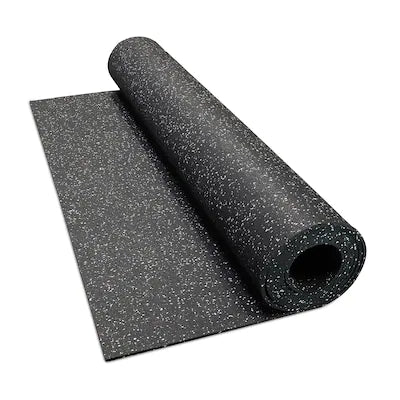At 5,280 feet above sea level, working out in Denver altitude presents both a physiological challenge and a remarkable opportunity to enhance your athletic performance. When you exercise in the Mile High City, your body experiences a unique stress, less oxygen in each breath that triggers powerful adaptations that can benefit elite endurance athletes and weekend warriors alike.
In this comprehensive guide, we’ll explore how to optimize your training in Denver’s high altitude, leverage the physiological changes for enhanced performance, and avoid the pitfalls that can derail your fitness goals at elevation.
Why Altitude Training Is Great for Your Performance

Altitude training is one of the most effective natural performance enhancement methods in sports science, with decades of proven results. The thinner air in Denver contains approximately 17% less oxygen than at sea level, creating a natural stimulus that forces your body to become more efficient.
When properly implemented, altitude training provides several benefits:
-
Enhanced Endurance: Training at higher altitudes stimulates increased production of erythropoietin (EPO), leading to more red blood cells and greater oxygen delivery capacity
-
Improved Recovery: The physiological adaptations help your body become more efficient at oxygen utilization
-
Versatile Application: Suitable for various athletes, from endurance runners to team sport competitors
-
Performance Edge: Create natural advantages that translate to superior results at sea level
Research shows that elite athletes who properly adapt to high altitude environments can maintain these benefits for weeks after returning to lower altitudes, giving you a competitive edge that’s completely natural.
For more on the science-backed advantages of altitude training, check out this comprehensive overview from TrainingPeaks.
The Science Behind Working Out in Denver Altitude

Working out in Denver altitude fundamentally changes how your body processes oxygen, triggering a cascade of physiological adaptations that can dramatically enhance your athletic capacity.
How Your Body Responds to Less Oxygen
When you exercise in Denver’s high elevation, your muscles receive less oxygen with each breath. This hypoxic (low-oxygen) environment immediately forces your body to work harder:
-
Your heart rate increases to pump more blood
-
Your breathing rate and depth increase
-
Your body begins prioritizing oxygen delivery to essential tissues
Within days, your kidneys detect the lower oxygen levels and increase production of EPO, which stimulates your bone marrow to produce more red blood cells. This adaptation improves your oxygen delivery capacity, allowing you to transport more oxygen to working muscles despite the thinner air.
Measurable Physiological Changes
The impact of altitude on performance is quantifiable. At Denver’s elevation, you can expect:
-
A reduction in VO2 max (the maximum amount of oxygen your body can use during intense exercise) by approximately 3%
-
Higher heart rates at the same exercise intensity compared to sea level
-
Increased perceived exertion for the same workload
However, after 2-3 weeks of consistent exposure, these effects begin to reverse as your body adapts, ultimately creating a stronger, more efficient cardiovascular system.
Initial Adaptation Strategies
Your first experience working out in Denver altitude requires a strategic approach to maximize adaptation while preventing the setbacks of altitude sickness.
Preventing Altitude Sickness During Exercise
Altitude sickness can range from mild discomfort to severe conditions requiring medical attention. To prevent altitude sickness while maintaining your training:
-
Follow gradual ascent principles: If possible, spend a day or two at moderate altitude before reaching Denver. Ascending slowly allows the body ample time to adjust to changes in atmospheric pressure and oxygen levels.
-
Reduce intensity: Decrease workout intensity by 30-40% during your first week
-
Stay hydrated: The combination of dry air and higher respiration rates increases fluid loss
-
Monitor symptoms: Headache, nausea, and unusual fatigue during exercise can indicate altitude illness. For detailed guidance on altitude sickness symptoms and prevention, refer to this resource from the CDC
-
Get adequate rest: Sleep needs often increase during initial adaptation
Proper exercise form also helps prevent altitude-related fatigue and injury. Explore our insights on How Mirrors Impact Posture and Injury Prevention for safer workouts at elevation.
Timeline for Adaptation
Understanding the body’s adaptation timeline helps set realistic expectations:
-
Days 1-2: Performance decreases, perceived effort increases
-
Days 3-7: Initial adaptations begin, EPO production increases
-
Days 7-14: Red blood cell production accelerates
-
Weeks 2-3: Most athletes achieve basic adaptation
-
Weeks 3-6: Full physiological adaptation occurs
Remember that adaptation is highly individual, some athletes adapt quickly while others may take longer to acclimate to higher elevations.
Optimized Training Techniques

Elite endurance athletes have developed proven protocols for working out in Denver altitude that maximize physiological adaptations while maintaining training quality.
Top 10 Premium Training Techniques
-
Live High, Train Low: Stay in Denver but occasionally train at lower altitudes to maintain intensity while gaining adaptation benefits
-
Interval Training: One of the most effective methods for building cardiovascular capacity at altitude; extend recovery periods by 20-30% compared to sea level
-
Hypoxic Training: Add controlled oxygen restriction to enhance adaptations during specific workout segments
-
Altitude Simulation: Use fitness devices like elevation training masks to prepare before arriving in Denver
-
Gradual Ascent Protocol: Strategic and safe progression from lower altitudes to Denver’s elevation for optimal results
-
Aerobic Base Building: Focus on aerobic exercise capacity through moderate-intensity, longer-duration workouts
-
High-Intensity Mountain Sessions: Once adapted, incorporate dramatic elevation changes for performance breakthroughs
-
Tempo Runs: Perfect for lactate threshold improvement; run at a challenging but sustainable pace
-
Hill Sprint Progressions: Develop explosive leg strength and power with strategic hill workouts
-
Recovery Optimization: Prioritize proper recovery techniques to maximize adaptation between sessions
Sport-Specific Adjustments
Different athletic pursuits require unique modifications when training at high altitude:
Endurance Athletes:
-
Extend warm-ups by 5-10 minutes
-
Reduce intensity of key workouts by 10-15%
-
Focus on effort levels rather than pace or heart rate metrics
For better synchronization of your cardio sessions at altitude, discover how Gym Mirrors Improve Your Cardio and Dance Form.
Team Sport Athletes:
-
Modify work-to-rest ratios during drills (more rest)
-
Implement progressive intensity over your first 2 weeks
-
Maintain strength training volume but reduce intensity initially
Strength Athletes:
-
Expect approximately 5-10% decrease in maximum lifts
-
Add an extra rest day during your first two weeks
-
Consider shorter, more frequent strength sessions
Nutrition and Hydration Strategies

The physical demands of high altitude training require specialized nutrition and hydration strategies to fuel your body’s increased oxygen demands and support adaptation. The body needs a balanced diet rich in carbohydrates, proteins, and fats for energy production and muscle repair at altitude.
Hydration Requirements
The combination of higher elevations and low humidity in Denver significantly increases fluid loss through respiration and sweat. To stay hydrated:
-
Drink an additional 16-32oz of water daily beyond your normal intake
-
Monitor urine color (pale yellow indicates proper hydration)
-
Consider electrolyte supplements during longer training sessions, as electrolytes like sodium, potassium, and magnesium are lost through sweat at high altitude
-
Keep a water bottle with you constantly, thirst sensation is often delayed at altitude
Optimal Nutrition for Altitude Performance
Your body requires specific nutritional support to maintain energy levels and facilitate adaptation:
-
Iron-rich foods: Lean proteins, beans, and leafy greens support red blood cell production
-
Carbohydrate timing: Consume carbohydrates before workouts to maintain energy levels when oxygen is limited
-
Antioxidant-rich foods: Berries, colorful vegetables, and whole grains help combat increased oxidative stress
-
Frequent meals: Smaller, more frequent meals help maintain blood sugar and energy levels
-
Caloric intake: Many athletes require 10-15% more calories at altitude due to increased metabolic demands
Recovery Optimization at Altitude
Recovery becomes even more crucial when working out in Denver altitude, as your body works harder to adapt to both your training stimulus and the environmental stress.
Sleep Strategies
Quality sleep is essential for adaptation, yet many experience disrupted sleep at altitude:
-
Allow for 8-9 hours of sleep opportunity (versus your normal 7-8)
-
Consider a humidifier to counteract the dry air
-
Keep your room slightly cooler than usual
-
Avoid alcohol, which can worsen sleep quality at altitude
-
Establish a consistent sleep schedule to support recovery
-
Be mindful of altitude sickness symptoms, which include headache, dizziness, and shortness of breath, as they can disrupt sleep quality.
Monitoring and Preventing Overtraining
The combined stress of altitude and exercise increases overtraining risk. Monitor these signals:
-
Resting heart rate increases of 5+ beats per minute
-
Persistent fatigue despite adequate rest
-
Decreased performance over multiple sessions
-
Mood disturbances or motivation loss
-
Delayed recovery from workouts
Implement regular recovery weeks (reducing volume by 30-40%) every 3-4 weeks when training at altitude to prevent overtraining.
The Altitude Training Process

Step 1: Fitness Assessment
Before beginning an altitude training program, assess your current fitness level, oxygen utilization, and physiological markers. This provides baseline data and helps identify your optimal training altitude. Common assessments include:
-
VO2 max testing
-
Blood work (including hematological variables)
-
Lung function testing
-
Subjective exercise tolerance evaluation
Step 2: Program Design
Based on your assessment, create a training plan using selected techniques and complementary nutrition strategies. Your program should account for:
-
Your fitness level and training history
-
Specific sport demands
-
Duration of altitude exposure
-
Performance goals
Step 3: Professional Implementation
Proper guidance ensures optimal adaptation. An experienced coach will:
-
Adjust workouts based on your daily responses
-
Monitor key physiological markers
-
Modify intensity and volume as needed
-
Keep you on the right track toward your goals
Step 4: Performance Monitoring
Detailed tracking protocols provide full control over your adaptation:
-
Heart rate variability monitoring
-
Sleep quality assessment
-
Performance testing at regular intervals
-
Subjective feedback on perceived exertion and recovery
Frequently Asked Questions
How long does it take to adapt to altitude?
Most athletes require 2-3 weeks for initial adaptation to Denver’s elevation. We recommend gradually increasing elevation and training intensity to optimize results. Complete physiological adaptation, including maximum red blood cell production, typically occurs within 4-6 weeks of consistent altitude exposure.
Can I train effectively without traveling to altitude?
While natural altitude provides the best stimulus, several simulation methods can produce significant benefits when real elevation isn’t accessible. Elevation training masks, hypoxic tents, and altitude chambers can create controlled low oxygen environments that trigger some of the same adaptations you’d experience in Denver.
Do you provide ongoing coaching services?
Yes! We also offer maintenance programs to help you retain your altitude-induced adaptations long-term. Our coaches can design protocols that help you maintain the physiological changes even when you return to lower altitudes, ensuring your hard-earned benefits don’t disappear.
What’s the difference between training at Denver’s altitude versus higher mountain towns?
Denver’s mile-high elevation (5,280 feet) represents an ideal starting point for altitude training. It’s high enough to trigger beneficial physiological adaptations without the risk of severe altitude sickness common at elevations above 8,000 feet. Elevation training typically occurs at altitudes of 7,000 to 8,000 feet above sea level, making Denver a great preparatory location before progressing to higher elevations like Colorado’s ski towns (7,000-10,000 feet) after initial adaptation.
Take Your Training to New Heights
The benefits of working out in Denver altitude extend well beyond your time in the Mile High City. The physiological adaptations triggered by training in this environment represent one of sports science’s most powerful natural performance enhancers, your body becomes more efficient, powerful, and enduring.
Whether you’re a competitive athlete seeking a performance edge or a fitness enthusiast looking to maximize your potential, altitude training in Denver offers a scientifically-proven path to elevated performance.
Train with the advantage of elevation. Our experts can help you maximize your altitude training benefits and transform your athletic performance through the power of Denver’s unique training environment.






